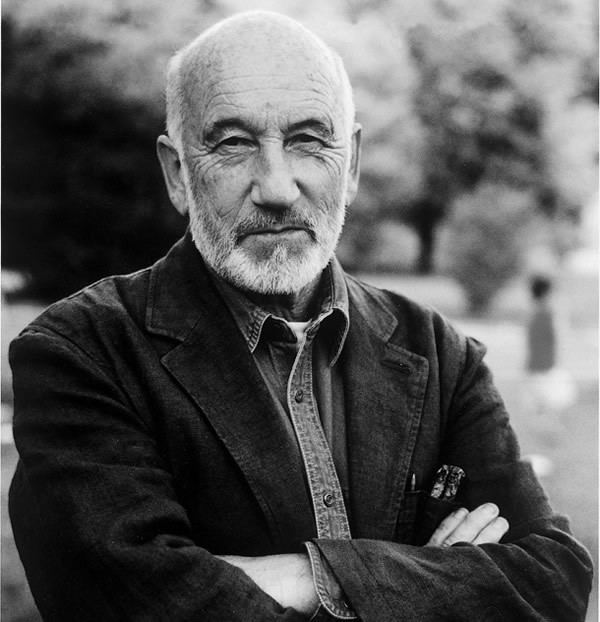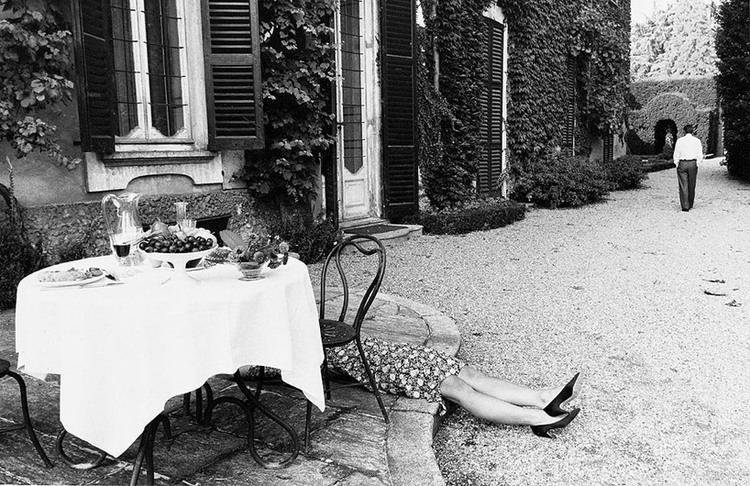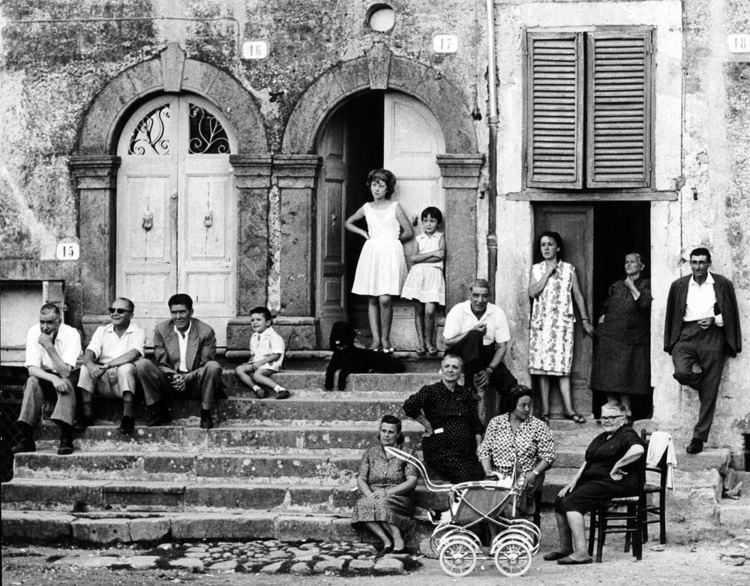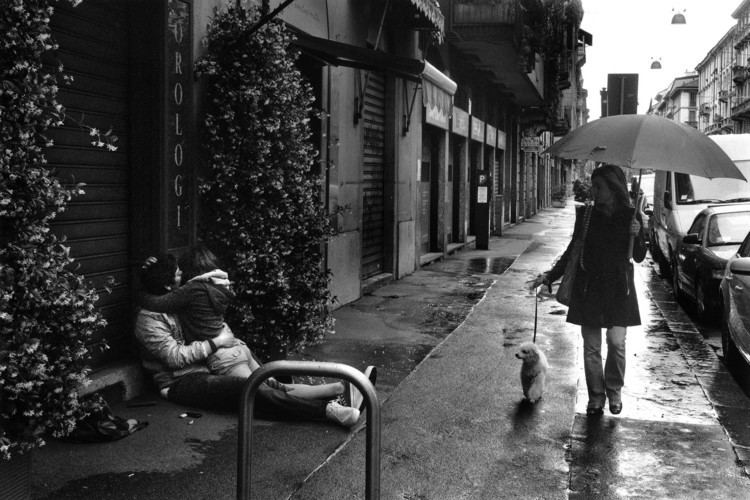 | ||
Books Giorgio Morandi's studio, At the heart of the port, Genoa Similar | ||
Gianni berengo gardin un piacevole incontro
Gianni Berengo Gardin (born 1930) is an Italian photographer who has concentrated on reportage and editorial work, but whose career as a photographer has encompassed book illustration and advertising.
Contents
- Gianni berengo gardin un piacevole incontro
- Gianni berengo gardin le fotografie inutili
- Life and career
- Vaporetto Venice 1960
- Books
- Exhibitions
- Awards
- Collections
- Further viewing
- References

"Undoubtedly the most important photographer in Italy in the latter part of the 20th century", "[f]or more than fifty years Gianni Berengo Gardin has been taking photographs with the humility and passion of a great craftsman."

Gianni berengo gardin le fotografie inutili
Life and career

Born in Santa Margherita Ligure on 10 October 1930, Berengo Gardin lived in Switzerland, Rome, Paris and Venice before starting as an amateur photographer in 1954. As a photographer, he was self-taught, learning photography from two years he spent in Paris working with other photographers.

In Berengo Gardin's first year as a photographer, 1954, his first photographs were published in Il Mondo. This magazine, edited by Mario Pannunzio, was one to which both amateurs and professionals liked to submit their work, although until 1959 the photographs were not attributed to particular photographers. It "pursued a photographic aesthetic that privileged street scenes and odd, ironic or bizarre encounters in both town and country", and "more than a third of the photographs published in Il Mondo were by [Berengo Gardin]." His "rare capacity for capturing simultaneous actions and objects within the same frame positioned him as an excellent candidate for that street life Pannunzio was after." Berengo Gardin would later have photo essays published in Domus, Epoca, l'Espresso, Stern, Time, Vogue Italia; Réalités; Le Figaro; and La Repubblica.
He turned professional in 1962 and two years later moved to Milan, where he has lived since 1975.
From 1966 to 1983 Berengo Gardin worked with Touring Club Italiano, providing much or all of the photography for books about regions of Italy and other European countries or their cities: he once identified the high point of his career as "The work I did in Great Britain, for the Touring Club in 1978" (adding that "I loved the cars: I had an Austin and an MG"). He did similar work for the publisher Istituto Geografico De Agostini (later De Agostini Publishing). In 1979 Berengo Gardin started to work with Renzo Piano, photographing the process of designing his buildings. Berengo Gardin also worked with major Italian firms – Alfa Romeo, Fiat, Italsider (later Ilva), Olivetti and others – showing the working life of employees, rather than the products.
In the early 1990s, Berengo Gardin spent time living among the Romani people (Zingari) of Italy, hoping to show their lives from the inside. This resulted in two highly regarded books, La disperata allegria (Florence) and Zingari a Palermo (1994 and 1997).
Since 1990 Berengo Gardin has been represented by Contrasto.
Berengo Gardin remains active in his eighties. A recent assignment, from la Repubblica, was to photograph the giant cruise ships that threaten the ecosystem of Venice.
Berengo Gardin has a large archive, with over 1.5 million negatives. The FORMA Foundation (Fondazione FORMA per la Fotografia, an offshoot of Contrasto), in Milan, will be managing this archive, including negatives, prints, documents and cameras. (Other material is at the Museum of Modern Art, New York.)
Berengo Gardin has named as influences on him the French photographers Henri Cartier-Bresson, Willy Ronis, Édouard Boubat and Robert Doisneau; others have identified the Italian group La Gondola and the American photographer W. Eugene Smith.
Gianni Berengo Gardin is one of the great generation of poetic documentarists who like to compose with an idea in mind [...] [H]is sympathies have always been with those whose day-to-day activities support the fabric of society: workers, doctors, priests and even itinerant musicians.
Vaporetto, Venice, 1960
Berengo Gardin's "most renowned image of Venice", often referred to as Vaporetto, Venice, 1960:
was taken in 1960, on a vaporetto with mirrored doors so that the passengers are trapped in a mosaic of reflections. Simultaneously mundane – the travellers are ordinary commuters – and exotic, it captures the paradox of a city trapped in an excess of representation.
Berengo Gardin describes how it came about:
I was 30, living on the Lido in Venice, and every morning I took the vaporetto, or water bus, across to where I worked in San Marco. [...] It was a matter of pure luck, really. I was doing a lot of architectural photography, and this was a spontaneous shot: I only took one picture. In the centre there is a reflection in the glass door of the vaporetto, behind which stands a man all dressed in black. If he'd been wearing white, the shot wouldn't have worked.
The photograph was included in Berengo Gardin's book Venise des saisons (1965). It was warmly received; Henri Cartier-Bresson:
ranked [this photograph] among the 80 most important photographs ever taken. The co-presence of gazes and of frames within a frame makes it an exceptional in-camera montage of different spaces and human figures, reminiscent of Velasquez's illusions, and suggestive of this photographer's multiple artistic influences: the French school of reportage (Doisneau, Boubat, Ronis) and a group of Venetian photographers called La Gondola [...] and Eugene Smith's powerful renditions of black and white. At the end of the 1950s this new kind of reportage seemed to reconcile social documentary with the photographer's subjective exploration of the world, thus putting an end to the dispute about form and content that had divided many postwar image makers.
Books
Berengo Gardin has been the sole contributor or a major contributor to a large number of photobooks: the exact number up to any time depends on various definitions – what a separate book is (as opposed to a mere new edition), what a "major" contribution is, and more – but one estimate in 2014 put the number at 250 (and added that "only 10 are in colour").
Morire di classe (1969) is probably the most celebrated among Berengo Gardin's books. Other award-winning books (see "Awards") include India dei villaggi (1981, about the villages of India) and La disperata allegria and Zingari a Palermo (1994 and 1997, about the Romani people of Florence and Palermo respectively).
"Books such as Dentro le case and Dentro il lavoro are some of the best journalistic records of how people worked and lived in post-WWII Italy."
Exhibitions
Berengo Gardin has had many exhibitions: the number was described in 2008 as "around 200". A small sample are listed below.
